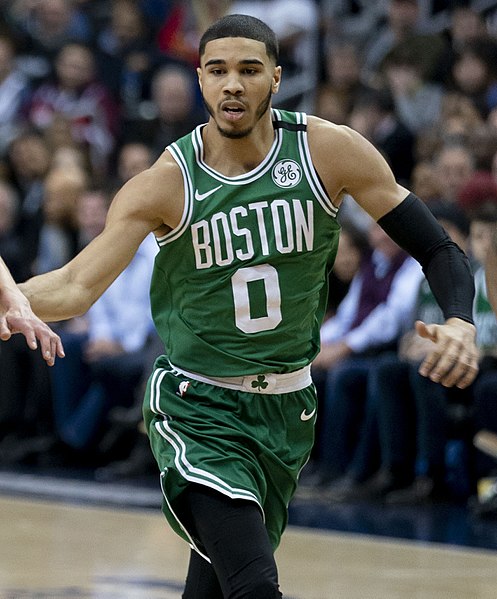What should Celtics fans take from a disappointing preseason?

By: Ethan Fuller
NBA preseason play is traditionally overanalyzed. Diehard fans who have waited all summer practically foam at the mouth over the thought of live basketball, craving for the chance to dissect their team. Preseason is a chance for NBA regulars to get a tune-up and training camp hopefuls to make their final impressions. Playing time is skewed. Effort (for stars, at least) is reduced. Yet crowds still fill many arenas around the country.
The Celtics are projected by many to be the top team in the Eastern Conference this year, but came out of preseason with a dismal 1-3 record. They only played two teams, going 1-1 against the Charlotte Hornets and 0-2 against the Lebron-less Cleveland Cavaliers.
Mere fractions of stock should be placed into Boston’s record. After all, the starting lineup played a smaller role. Kyrie Irving led the team with just 25.6 minutes played per game, and he only appeared in two contests. A sample size of just two teams, who also largely played reserves, is not an accurate comparison tool for the regular season. The Celtics’ game philosophy will be completely changed come opening night.
However, preseason is the closest fans get to a meaningful game, and the scores still have a subconscious impact. Here are three eye-catching takeaways that should give Celtics fans cause for optimism or concern.
Gordon Hayward, but not Gordon Hayward, Has Returned
Boston rejoiced when Gordon Hayward stepped onto the parquet for the first time since his horrific injury in last year’s opening contest. After months of rehab and speculation, the swingman played an average of 20 minutes in three of four contests. His ankle looked to be perfectly healed.
Unfortunately, Hayward was a shell of his former self on the court. He shot just 25% from the field and a stunning 10% from beyond the arc. He posted a plus/minus of -12.7, far and away the worst on the team. Hayward often looked passive and nervous on the court, and he was hardly involved in high-contact plays. He frequently passed the ball soon after receiving it and rarely drove into the paint to make a play.
Of course, expectations should be low for the former All-Star. His injury undoubtedly was physically and mentally damaging. Finding his rhythm and his fit with fellow wings Jayson Tatum and Jaylen Brown will take time, and the Celtics have enough depth that they can afford to bring Hayward along slowly.
Hayward’s return brought a mix of positive and negative results. On one end, he played healthy, minus a small back injury, for three games. In contrast, the player that suited up for Boston was not the same as the two-way star that led the Utah Jazz two years ago. Hayward is starting slow, but there should be no panicking yet.
Three-Point Troubles
The Celtics posted the second-best three-point percentage among NBA franchises last year, converting treys at a 37.7% clip. In today’s league, long range accuracy is at a premium, and the C’s had that skill set accounted for. All five starters shot at least 39% from three in their most reason season (Hayward shot 39.8% in 2016-17). The deadly three-point potential for this squad is obvious.
In preseason, the Celtics looked like a completely different team. Though they launched plenty of attempts, the players could not consistently find the rim. They are the worst-shooting NBA team thus far and place ahead of only the New Zealand Breakers and Australia’s Melbourne United. The first game against Charlotte saw the Celtics go a jaw-dropping 9-of-47 on three-point shots.
As for individual players? Only Marcus Morris made more than three long balls, swishing ten. While Al Horford made his only attempt, other notables are as follows:
Kyrie Irving- 2/9 Jayson Tatum- 3/9 Gordon Hayward- 1/10
Jaylen Brown: 3/17 Terry Rozier- 3/14 Semi Ojeleye- 3/17
Some of these rates are surely outliers; Irving and Hayward have been long-range snipers throughout their careers. There is also no reason to believe in serious regression from Jayson Tatum or Jaylen Brown. However, Terry Rozier has been an inconsistent shooter in his first few years, and Ojeleye struggled mightily last season. While these numbers can easily be attributed to summer rust, they are jarring enough to warrant a second look.
Flashes From the Young Bigs
Two of Boston’s prospects, Guerschon Yabusele and Robert Williams, made solid cases as long-term rotation pieces during the preseason. While neither received ample time to showcase their talents, both performed well in limited minutes.
Yabusele demonstrated his mobility and strength in the paint during his time on the floor. He worked multiple defenders in the restricted area and also ran the floor on fast breaks, leading to easy buckets in transition. The “Dancing Bear” also impressed on defense, blocking numerous shots. While he struggled to shoot the ball out side the paint and posted a horrendous 20% free throw rate, Yabu has historically been a good shooter. The Frenchman has been talked about as a potential trade chip, but he’s showing Danny Ainge that he deserves a shot at quality minutes.
Meanwhile, rookie rim protector Robert Williams displayed the paint presence that led him to being selected 27th overall. Leading the team with 3.6 blocks per 36 minutes, Williams was ferocious down low in his 40 minutes of action. The Texas A&M product notched an extremely impressive defensive rating of 83.6 and scored well in the paint on offense. Still extremely raw, Williams should be an exciting prospect to watch develop.